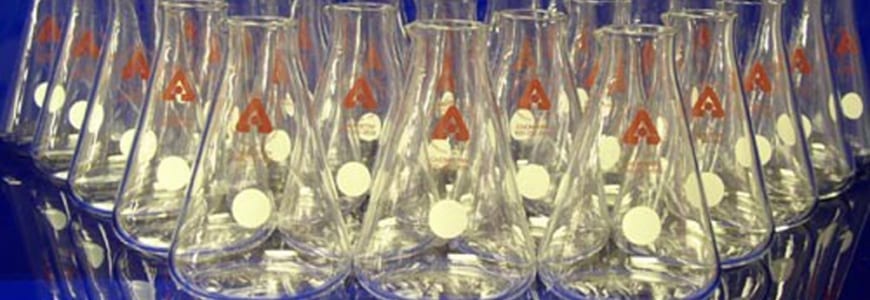By Rob Mitchum // February 18, 2014
The age of the single author paper is over. In fact, the age of the single laboratory paper may be over. Increases in scientific complexity, data and computation needs, and technology expenses make it harder and harder for small to medium-sized laboratories to “go it alone,” driving researchers to look beyond their bench for help. In the “Outsourcing Science: Will the Cloud Transform Research?” session at the 2014 AAAS Annual Meeting, three science-as-a-service providers talked about how they are using market incentives, cloud computing, and online communities to help connect scientists with the instrumentation and expertise they need in the modern research world.
In introducing the session, Ian Foster, director of the Computation Institute, asked why science has not followed business in outsourcing time-consuming and specialized tasks to external providers. For instance, few companies today maintain and run their own e-mail service, instead using cloud-based services such as Gmail or Microsoft Exchange. But laboratories rarely explore opportunities to delegate computational or experimental work elsewhere, leading to unnecessary expense and wasted time.
One solution was provided by Elizabeth Iorns of Science Exchange, which she co-founded in 2011. Iorns presented data showing that the average number of authors and institutions on scientific articles has nearly doubled over the past decade, indicating the increased demand for collaboration.
In most collaborations, science has traditionally used a sort of barter system, with scientists exchanging resources, animal models, or labor in exchange for co-author credit. But often that model is inefficient, unsustainable, and frustrating to researchers, Iorns said. Science Exchange lets that increased demand for collaboration drive a marketplace where researchers can order up an experiment from participating laboratories at over 400 institutes. Instead of buying a state-of-the-art gene sequencer that may cost millions of dollars, a researcher can pay a much smaller fee to have a laboratory that already owns that piece of equipment do the research. By analogy to the concept of distributed computing, Iorns calls the result “distributed research.”
“You have a network of experts and can distribute research across multiple labs, and this means that much more research can be performed in shorter timeframes,” Iorns said. “We really believe science will operate fundamentally different in next five years because of the rise of things like science-as-a-service.”
The other two presentations of the session demonstrated the power of web-based services to help scientists generate and analyze data. Gerhard Klimeck of Purdue University presented nanoHUB.org, a site for running computer simulations for the fast-growing field of nanotechnology. In ten years, nanoHUB has grown to 13,500 annual users and over 300,000 tutorial viewers, and a network of volunteer developers continues to create new simulation tools and improve upon existing code. The site’s success demonstrates how creating a community around a science-as-a-service tool helps to keep it updated and popular.
“We are enabling scientific simulation and data as a service, and we invite the community to participate,” Klimeck said. “‘Build it and they will come’ does not work; you really have to satisfy all the needs of all the stakeholders that are involved and develop a business model and incentives for all of those stakeholders, so that they actually can participate.”
KBase, presented by CI Senior Fellow Folker Meyer, is still under construction, though the platform incorporates gene annotation services, RAST and MG-RAST, that microbiologists have used since 2007. But the need for genomic analysis is only climbing, Meyer said, as the gap between the price of gene sequencing and the pace of Moore’s Law grows ever larger. So KBase combines annotation with additional large-scale, high-quality analytics for microbial genomes, including tools for modeling biological function and behavior, single cell sequencing, and metagenomic analysis. Even before going into full production, early tests on the platform showed improved speed as well as depth.
“When I started in science, my first task was to annotate a microbial genome,” Meyer said. “That was a huge undertaking, it took months to build the infrastructure. Earlier this week, I saw a demonstration where somebody went and did an online high-quality annotation of a microbial genome, and it took about three minutes with the help of K-Base. This is just unbelieveable progress.”
Yet despite these impressive displays, the wider scientific community’s adoption of cloud-based and outsourced services remains frustratingly slow. In a panel discussion, all three speakers said that the culture of science needs to become more collaborative and more comfortable with software to take full advantage of these opportunities. But spreading the gospel of science-as-a-service can help set this culture change in motion, making research more cost- and time-efficient as well as opening the door to more aspiring scientists.
“There’s a huge amount of democratization, that’s one of the most exciting things. You just completely eliminate the ‘rich get richer’ concept that currently exists in academic research,” Iorns said. “People completely outside the traditional scientific axis are still able to do really cool experiments.”

